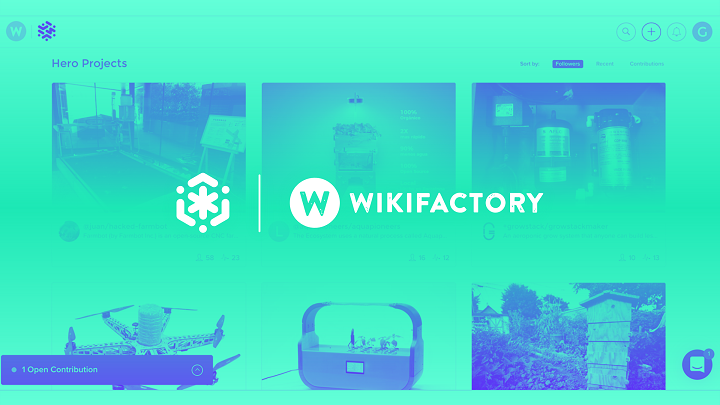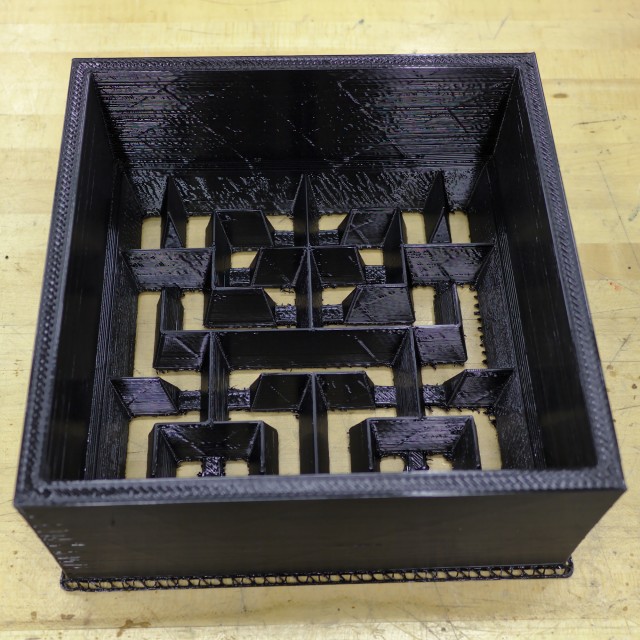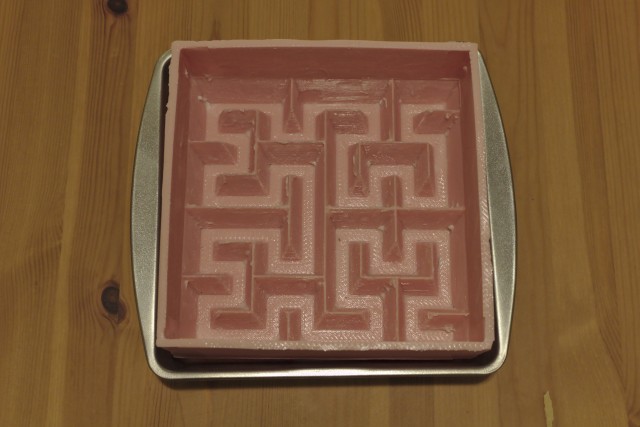There are many ongoing efforts to use 3D printing for the purposes of increasing sustainability in the world, from marine applications and reducing plastic waste to clean water initiatives and food sustainability. The latest to join the fight is collaborative product development social platform Wikifactory, which is teaming up with the non-profit Thought For Food (TFF) Foundation, to enable knowledge exchange for AI-powered, data driven, and 3D printed open hardware solutions for sustainable agriculture and food.
 “We have news for aspiring entrepreneurs and innovators that use 3D printing and digital fabrication. Wikifactory is partnering with the 2019 Thought for Food Challenge – a global “collaborative competition” to develop and launch breakthrough hardware solutions to sustainably feed the world,” Wikifactory’s Growth and Community Manager Caroline Portugal told 3DPrint.com.
“We have news for aspiring entrepreneurs and innovators that use 3D printing and digital fabrication. Wikifactory is partnering with the 2019 Thought for Food Challenge – a global “collaborative competition” to develop and launch breakthrough hardware solutions to sustainably feed the world,” Wikifactory’s Growth and Community Manager Caroline Portugal told 3DPrint.com.
TFF is an innovation engine for food and agriculture, and thanks to this new partnership, the Wikifactory platform is now integrated into its TFF Digital Labs startup acceleration and collaboration platform.

Anyone who is passionate about creating food system change can sign up for the 2019 TFF Challenge at no cost. According to the challenge website, the non-profit is working with top partners this year to “launch specific innovation challenges in order to encourage solution development” in several areas, such as the Circular Economy of Food, Regenerative Agroforestry, and space colonization.
“We are excited to partner with Thought For Food to build a thriving ecosystem of open hardware for food innovation,” said Christina Rebel, Co-founder and Chief Communities Officer at Wikifactory. “We want to see food-tech innovators, farmers, engineers, and agripreneurs to apply the open mindset of a software designer to accelerate the solution development for challenges facing our food systems. We might not have all the answers as individuals, but by sharing openly with a global community we can arrive at solutions faster.”
 Collaboration is key to TFF’s approach to innovation, and the organization has spent years investigating different types of business models that allow for cooperation by many different parties. TFF is hoping to decrease what it calls “duplicative innovation efforts” by encouraging cross-licensing programs and technology transfer, so that organizations can work together to efficiently create helpful innovations.
Collaboration is key to TFF’s approach to innovation, and the organization has spent years investigating different types of business models that allow for cooperation by many different parties. TFF is hoping to decrease what it calls “duplicative innovation efforts” by encouraging cross-licensing programs and technology transfer, so that organizations can work together to efficiently create helpful innovations.
Due to this collaboration, all teams participating in this year’s TFF Challenge will now be able to freely access Wikifactory’s social platform, taking advantage of more than 800 open hardware projects – on topics like drones, robotics, food-waste technology, sensors, and recycling – from the community of over 8,000 people from 130 countries. Additionally, participants can easily work with project innovators and hardware developers in order to gain feedback by using Wikifactory’s free collaboration tools, such as feedback and task systems, a powerful 3D viewer for 30+ CAD formats, and a documentation editor. These tools will allow teams to host and view projects online and manage their work across virtual teams.

Two of the example open source projects that TFF Challenge teams can help contribute to are the Dronecoria platform, which aims to use drones to sow seed balls from the air in order for reforestation efforts, and the Smart Citizen Kit, which uses a mobile app, Arduino-compatible hardware, and a data visualization web API for environmental monitoring purposes.
Wikifactory is making food and agriculture tech more accessible and affordable for smaller players, like the TFF Foundation and its challenge, by using inexpensive sensors and small automated systems that use Arduino and Raspberry Pi. Then, innovators are able to use makerspaces and 3D printer networks to deploy their solutions into the world.

Christine Gould
“We have seen the massive innovation boost that open source has brought to the software industry, and we want to bring that spirit to the food and agriculture industry. We need more people creating innovations, participating in using it, and integrating solutions to create broader impact,” stated Christine Gould, the Founder and CEO of Thought For Food. “Our world has reached a critical turning point where our old innovation systems are ripe for reinvention by mass collaboration. We need to reboot all the old models, approaches and structures, and this is one way we can help do this. By supporting the open hardware and open-source movement, Thought For Food and Wikifactory aim to increase the speed and impact of food system innovation towards sustainability and inclusivity.”
TFF Challenge participants can access the TFF Digital Labs – now integrated with Wikifactory’s tools – an innovation roadmap, expert and peer-to-peer mentoring from the foundation’s global community, practical learning content, and the opportunity to win travel and funding opportunities. The judges will choose the winners by looking at the innovation, implementation and scalability, team spirit, and uniqueness of each team’s solution. Finalists will have the opportunity to travel to Kuala Lumpur, Malaysia, in March 2020 to pitch their ideas in front of investors and jury members, and win other prizes.
Discuss this story and other 3D printing topics at 3DPrintBoard.com or share your thoughts in the Facebook comments below.
The post Wikifactory and Thought For Food Challenge: Solutions to Sustainably Feed the World appeared first on 3DPrint.com | The Voice of 3D Printing / Additive Manufacturing.












